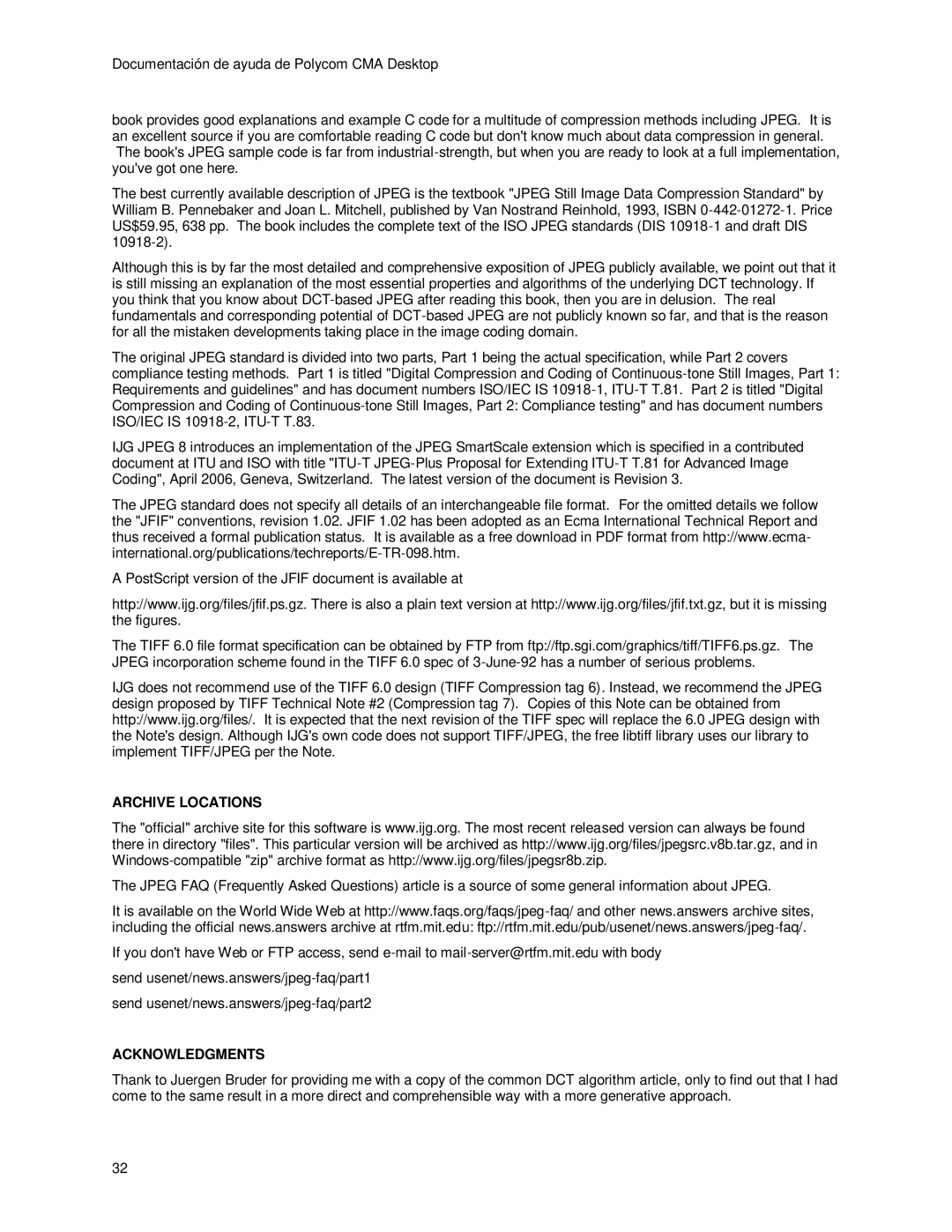Documentación de ayuda de Polycom CMA Desktop
book provides good explanations and example C code for a multitude of compression methods including JPEG. It is an excellent source if you are comfortable reading C code but don't know much about data compression in general. The book's JPEG sample code is far from
The best currently available description of JPEG is the textbook "JPEG Still Image Data Compression Standard" by William B. Pennebaker and Joan L. Mitchell, published by Van Nostrand Reinhold, 1993, ISBN
Although this is by far the most detailed and comprehensive exposition of JPEG publicly available, we point out that it is still missing an explanation of the most essential properties and algorithms of the underlying DCT technology. If you think that you know about
The original JPEG standard is divided into two parts, Part 1 being the actual specification, while Part 2 covers compliance testing methods. Part 1 is titled "Digital Compression and Coding of
IJG JPEG 8 introduces an implementation of the JPEG SmartScale extension which is specified in a contributed document at ITU and ISO with title
The JPEG standard does not specify all details of an interchangeable file format. For the omitted details we follow the "JFIF" conventions, revision 1.02. JFIF 1.02 has been adopted as an Ecma International Technical Report and thus received a formal publication status. It is available as a free download in PDF format from http://www.ecma-
A PostScript version of the JFIF document is available at
http://www.ijg.org/files/jfif.ps.gz. There is also a plain text version at http://www.ijg.org/files/jfif.txt.gz, but it is missing the figures.
The TIFF 6.0 file format specification can be obtained by FTP from ftp://ftp.sgi.com/graphics/tiff/TIFF6.ps.gz. The JPEG incorporation scheme found in the TIFF 6.0 spec of
IJG does not recommend use of the TIFF 6.0 design (TIFF Compression tag 6). Instead, we recommend the JPEG design proposed by TIFF Technical Note #2 (Compression tag 7). Copies of this Note can be obtained from http://www.ijg.org/files/. It is expected that the next revision of the TIFF spec will replace the 6.0 JPEG design with the Note's design. Although IJG's own code does not support TIFF/JPEG, the free libtiff library uses our library to implement TIFF/JPEG per the Note.
ARCHIVE LOCATIONS
The "official" archive site for this software is www.ijg.org. The most recent released version can always be found there in directory "files". This particular version will be archived as http://www.ijg.org/files/jpegsrc.v8b.tar.gz, and in
The JPEG FAQ (Frequently Asked Questions) article is a source of some general information about JPEG.
It is available on the World Wide Web at
If you don't have Web or FTP access, send
send
send
ACKNOWLEDGMENTS
Thank to Juergen Bruder for providing me with a copy of the common DCT algorithm article, only to find out that I had come to the same result in a more direct and comprehensible way with a more generative approach.
32
